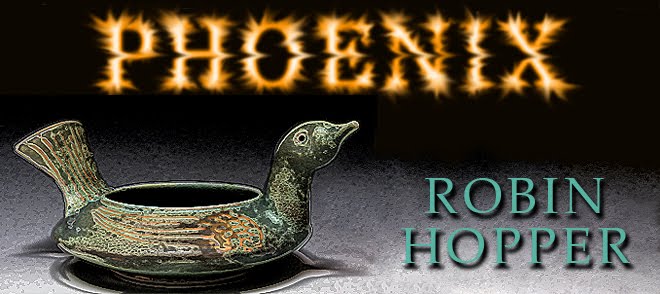GARDEN IMAGES to
GLAZE PAINTING
AS I'VE SAID MANY TIMES BEFORE, OUR LARGE ANGLOJAPANADIAN GARDEN IS MY BIGGEST SOURCE OF IDEAS AND INSPIRATION, FROM POTS TO GLAZE PAINTINGS ON PC SUBSTRATES.
THIS POSTING SHOWS THAT INTERPRETATION IN ACTION. SEVERAL EARLIER POSTINGS HAVE FOCUSSED ON GLAZE AND COLOR RESEARCH AND THE USE OF
PC SUBSTRATES.
 |
THROUGH THE EQUATORIAL ARCH |
ABOUT A QUARTER OF THE WAY THROUGH THE GARDEN IS WHAT I CALL "THE EQUATORIAL ARCH". IT SPANS THE POINT WHERE FULL SHADE BECOMES FULL SUN. ON THE SOUTH SIDE, LOOKING THROUGH THE ARCH, THE VISIBLE PLANTINGS ARE ALL IN SHADES OF YELLOW - INSPIRED BY SUNLIGHT. ON THE NORTH SIDE THE COLORS OF VEGETATION IS ALMOST ENTIRELY IN SHADE, USING DARK GREEN AND BLUE GREEN TO EMPHASIZE THE YELLOW COLOR THROUGH THE ARCH, BECOMING PART OF THE "TONGUE -IN-CHEEK"
GRECO-ROMAN GARDEN
FLEMMING'S TOTEM
TO THE RIGHT OF THE ARCH IS A TOTEM PILLAR MADE FROM RECYCLED WOOD PILINGS AND ALUMINUM SHEET BY MY FRIEND AND MIXED-MEDIA ARTIST FLEMMING JORGENSEN. THE LARGE-LEAFED PLANT IN FRONT IS JAPANESE COLTSFOOT.
I ENJOY THIS GARDEN DETAIL AND DECIDED TO MAKE INTERPRETIVE GLAZE PAINTINGS FROM IT. FIRST, I MADE SOME LOOSE, BRUSH AND INK DRAWINGS.
 |
SIMPLE BRUSHPEN AND INK DRAWING ON PAPER -
"EQUATORIAL ARCH" - NORTH SIDE |
 |
SNOW LANDSCAPE
PC SUBSTRATE GLAZE PAINTING - LAYERED GLAZES, BRUSHWORK AND UNDERGLAZE PEN DRAWING |
ARTISTIC LICENCE CAN BE USED TO INTERPRET IN WHATEVER COLOR AHD TEXTURE RANGE DEEMED DESIRABLE BY THE ARTIST. IT CAN BE FIRED AT WHATEVER TEMPERATURE THE GLAZES REQUIRE AND CAN BE DOWN-FIRED TO USE GLAZES THAT MATURE AT A LOWER TEMPERATURE FOR DETAILS, SUCH AS THE CHROME RED LEAD GLAZE AT CONE 010.
 |
"EQUATORIAL ARCH, BLUE SERIES" |
THE METHODOLOGY USED IN MY GLAZE PAINTING WORK GOES BACK TO MY YEARS OF GLAZE AND COLOR RESEARCH. GLAZE APPLICATION IS DONE BY BRUSHING, POURING, TRAILING AND SPLASHING. IN SHORT, ANY METHOD THAT WORKS TO INTERPRET THE
VISION OR INSPIRATION. KNOWING MATERIALS AND COLORANTS IS THE CORE TO VISUAL INTERPRETATION AND GLAZE PAINTING.
 |
LANDSCAPE INTERPRETATION ON LARGE PORCELAIN SLAB/THROWN
FORM WITH MULTIPLE GLAZE APPLICATION, FIRED AT CONE 10 REDUCTION.
"FOREST FIRE" SERIES - Robin Hopper 1977. |
MY NEXT TWO POSTINGS WILL BE VIEWS OF THIS YEAR'S HAPPENINGS AT THE METCHOSIN INTERNATIONAL SUMMER SCHOOL OF THE ARTS.
I WILL THEN GO BACK TO THE EARLIER ONE ON AGATEWARE THAT WAS LEFT UNFINISHED.
BEST WISHES FOR A GREAT SUMMER OF ART AND EXPLORATION.














